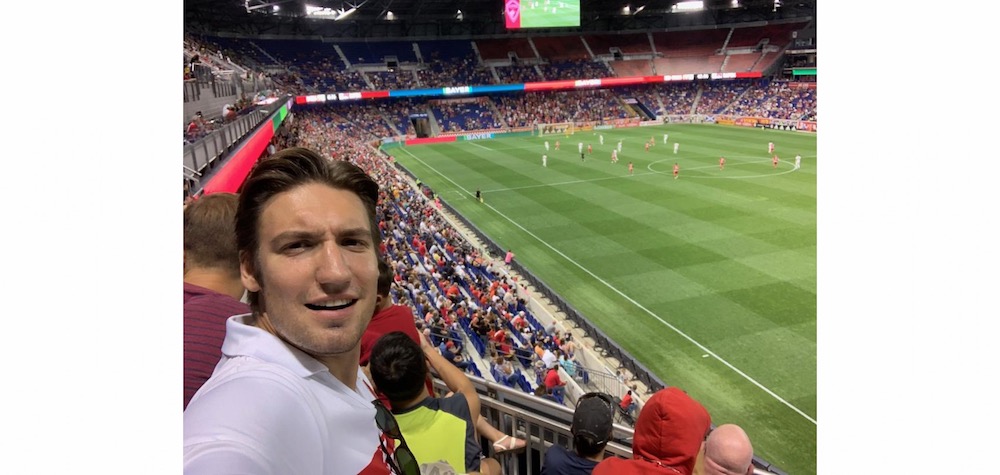By Yuri Serafini*
Of the various kinds of clips that are ubiquitous on social media apps like TikTok and Instagram, many have to do with sports.
In the world of sports, the universality of social media has had interesting implications. Social media has no borders, and users are delivered content based on the algorithm aggregating new content to the user’s history of clicks and views (as well as the clicks and views of the people that user interacts with).
No sport has been trying harder to tap into deep-pocketed American consumers than football (soccer), and no football league has had more success thus far than the English Premier League (even more so that the U.S.’s own MLS). Part of that success may be attributable to the ease of transferability of a plethora of media clips already produced in the Premier League’s U.K. home market. Any American social media user who follows “institutional” social media accounts (be they a Premier League club, or just a favorite player, pundit, or journalist) will eventually be served clips from Match of the Day or Monday Night Football, both popular highlight and analysis programs produced in England for an English audience. Some of these clips will have been cut up and posted by the BBC or Sky Sports (the show’s respective broadcasters). Others will have been re-posted by users eager to either agree or disagree with a given pundit’s opinion, or merely share clips of a favorite moment, or even cynically, “farm” for engagement. In other words, when these clips take on a life of their own, they are readily comprehensible by the American audience.
Sure, creating buzz thanks to users cutting and reposting clips is something that every major sports league in the U.S. does. And as outsiders, we don’t know and can’t know how much content is intentionally put out there by broadcasters and leagues that have contracted social media personalities to put content out there, and how much gets generated by content creators acting on their own. (In all probability, it’s a little bit of both.) But in terms of foreign leagues looking to grab a slice of the American attention pie, the English Premier League is uniquely positioned to do so — and not only does it show, but the results have been clear for a long while. The English Premier League’s television revenues are much larger than the other top European leagues, and even if we don’t have “official” comparisons of how those revenues break up by territory, we can safely assume that U.S. broadcasting deals are a big part of that.
As rival soccer leagues like Italy’s Serie A open rep offices in New York City to strategize how to reach American viewers, and the French Ligue 1’s commercial success is questioned by analysis-driven sports outlets like The New York Times digital platform The Athletic (on February 14, 2024, the Athletic’s Liam Thorne’s reported that Ligue 1 had a “TV broadcast rights issue — France’s TV revenue already lags behind Europe’s other major leagues and it is without a buyer for its next deal period.”), one topic on which analysts are surprisingly silent on is how these leagues plan to bridge the “Viral Gap” with the English Premier League. How are these leagues going to overcome the fact that no matter how good a product they deliver on the field, Americans who show interest in soccer on social media will necessarily gravitate towards the clips being generated in a language they understand?
Derek Rae, the lead commentator of the German Bundesliga for ESPN (who has also done commentary work for matches of La Liga of Spain), on a post dated May 8, 2024 on the social media platform X (formerly Twitter) mused that, “Talking to many new American fans, often they feel they’ve been sold that the PL [Premier League] is simply the best and everything else is second tier.”
So, it seems that many American football fans have already internalized the English perspective on football, and this includes the attitude that the Premier League is “The Best League in the World.” The English invented the game of football, and so the old chestnut goes, are known to be reticent to acknowledge that other countries can cherish the sport as much as they do, if not more. English football fans sang the refrain “It’s coming home” (from the popular song “Three Lions”) as their national team put together a string of winning performances to reach the final of the 2020 European National Team’s Championship (held the following year due to the 2020 COVID-19 pandemic), a chorus which confused some commentators from other countries, as England had never won the European Cup. When England eventually lost to Italy in the final, the Italian national team’s deputy-captain Leonardo Bonucci mocked the, “It’s coming home” refrain by shouting, “It’s coming to Rome,” for the cameras.
According to the most recent rankings by UEFA, European football’s governing body, the Italian Serie A actually ranks as the “Best League in the World” (and, thanks to this ranking, might see nearly half the Serie A qualify for a continental competition next year). Second is the German Bundesliga, while England ranks third, followed by France and Spain. However, as things stand now, this does not matter as far as American viewers are concerned.
*Yuri Serafini (pictured above) is an economist specializing in sports











Leave A Comment